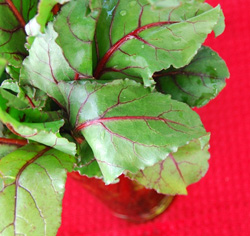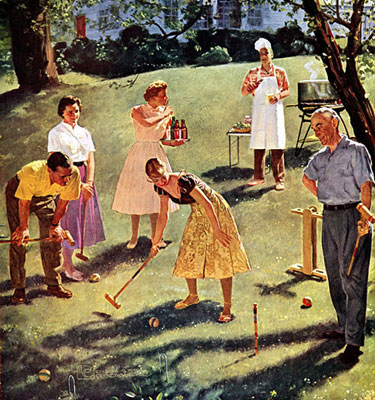 Everyone knows green asparagus—it's making an appearance right now in the markets, announcing that spring has arrived. But not everyone knows white asparagus. It rarely shows up in the market because it's such a specialty but it's definitely worth searching for. Not only does the color (or absence of) make it unique, its flavor is more delicate and milder than green asparagus. But why is it white?
Everyone knows green asparagus—it's making an appearance right now in the markets, announcing that spring has arrived. But not everyone knows white asparagus. It rarely shows up in the market because it's such a specialty but it's definitely worth searching for. Not only does the color (or absence of) make it unique, its flavor is more delicate and milder than green asparagus. But why is it white?
White asparagus is not a genetically modified variety, which most people would assume. It's really just green asparagus that has been kept from turning green. To keep it from turning green farmers cover the asparagus with mulch before it sprouts from the ground. This keeps out the light, shuts off photosynthesis, and produces the pale cream-colored spears.
Cooking with white asparagus is not much different than green, however, it's recommended that you peel the stalks because the skins tend to be tough and bitter. The simplest way to prepare it is just to boil it. Typically a hollandaise sauce or melted butter would then go on top but my recipe features a savory brown butter vinaigrette made with tangy lemon juice and sherry vinegar. It's perfect as an appetizer or even a side dish for any spring menu.

 A few weeks ago at the farmers' market I asked for a bunch of beets. The farmer grabbed a beautiful bunch: five crimson colored globes topped with remarkably long, red stalks and large, crisp leafy greens. I could practically taste them.
A few weeks ago at the farmers' market I asked for a bunch of beets. The farmer grabbed a beautiful bunch: five crimson colored globes topped with remarkably long, red stalks and large, crisp leafy greens. I could practically taste them. It’s funny how things come together in the kitchen. This week I’ve had lots of fingerling potatoes lying around, as I’ve been developing recipes with them for
It’s funny how things come together in the kitchen. This week I’ve had lots of fingerling potatoes lying around, as I’ve been developing recipes with them for  Los Angeles is shedding its winter coat, the birds are singing; Spring has boinged in like Zebedee. The farmers markets are jam-packed with citrus, strawberries, golden beets and asparagus.
Los Angeles is shedding its winter coat, the birds are singing; Spring has boinged in like Zebedee. The farmers markets are jam-packed with citrus, strawberries, golden beets and asparagus.
